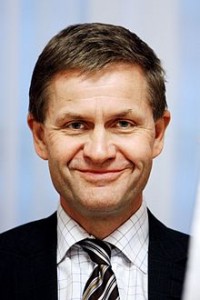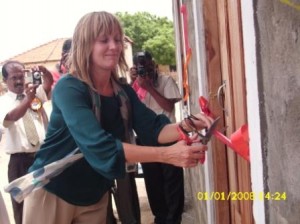Double edged Peace Process contributed to ending the War
A little over a year ago, the Norwegian government commissioned an evaluation of its intervention in regard to Sri Lanka’s ethnic conflict during the years 1997 to 2009. This report is now made public. It traces the story of
Norway’s involvement in peacemaking in Sri Lanka. Ironically the Norwegian peace effort both began and ended in the midst of raging war. In 1997 when they commenced and in 2008 when they finally withdrew as facilitator of the peace process, the levels of casualties in war were amongst the highest in the world at those particular times. But for a substantial period that spanned 2002 to 2005, the casualties fell to very low levels. Those were also the years when it seemed that Sri Lanka might become a model for peaceful resolution of a long standing conflict and have positive lessons for a world in need of them.
Controversial
But the Norwegian facilitation was always controversial. The conflict they stepped in to resolve had proved intractable for over five decades and the negotiating efforts of five Sri Lankan governments. The motives of the Norwegian facilitators were questioned. There was suspicion that the powerful Tamil Diaspora with their money and votes had unduly influenced the Norwegian government, although the size of the Tamil population in Norway is less than 20,000. The other suspicion was that Norway was acting at the behest of bigger powers with ulterior motives. Sri Lankans are keenly aware of the geo-strategic importance of the island on the sea lanes of international commerce and the competition amongst the big powers of the world for the prize it has to offer.
Hostile
It is said that those who wish to be bridges between hostile parties have to be prepared to be trod upon, or even stamped on. The Norwegian-facilitated peace process had the goal of a peaceful solution through negotiations, and even reached a point where the government and LTTE agreed to explore a power sharing solution within a united Sri Lanka. But when the peace process began to unravel in 2004, no country was more vilified in Sri Lanka than Norway. The evaluation report itself raises the question whether Norway overstayed its peacemaking role in Sri Lanka. The report makes various observations about the shortcomings in the Norwegian facilitative effort. These include making an incomplete analysis of the problem and failing to generate sufficient support from the international community.
Lessons learnt
The terms of reference of the evaluation state that its main purpose was to learn from the Norwegian experience as the facilitator of the Sri Lankan peace process. An important objective marked out for the evaluation was to provide recommendations to learn from the failures in Sri Lanka to inform future peace processes elsewhere in the world and thereby contribute to the international discussion on conflict resolution. The report makes many criticisms of the Norwegian facilitation effort and how it took place. It is to the credit of the Norwegian government that they were prepared to be publicly criticized and found fault with in order to improve themselves for the future. This is an example of transparency and accountability that governments and organizations in other parts of the world can follow.
Biggest economic donors
In undertaking its peace missions in different parts of the world, the general practice has been for Norway to operate together with other more powerful countries, and in a supportive role. However, in Sri Lanka, it was
Norway itself that took the lead role. This made the peace process a very special one for Norway. It poured in a lot of resources, both financial and human, into the peacemaking effort in Sri Lanka. During the time of the peace process Norway became one of Sri Lanka’s biggest economic donors. In addition, its top level officials from both governmental and non governmental sectors invested a considerable amount of time and effort in Sri Lanka. Norwegian government leaders became personally committed to ensuring the success of the peace process. Therefore even when things started to fall apart, they did not wish to give up.
The refusal of the LTTE to continue with peace talks in early 2003 was one turning point. Another turning point came in 2004 when President Chandrika Kumaratunga dissolved the government of Prime Minister Ranil Wickremesinghe who had signed the Ceasefire Agreement with the LTTE. Finally the walk out staged by the LTTE at the peace talks in 2006 with the new government headed by President Mahinda Rajapaksa was a sign that the peace process was not going to succeed. Despite all this negative evidence Norway remained as the facilitator and did not withdraw. In hindsight this was to the detriment of Norway but neither the Sri Lankan government nor the LTTE asked them to quit. So the Norwegians remained true to their mission of being a bridge between the two warring sides in the ultimately vain hope of a change for the better.
Key failure
One of the key failures of Norwegian facilitation which comes out in the evaluation report was the inability to come up with an appropriate response to the deliberate violations of the Ceasefire Agreement by the LTTE. During the entirety of the ceasefire period the LTTE kept on assassinating its opponents and violating human rights. This included killing Tamil informants, government intelligence personnel and also Tamil political leaders who belonged to other political parties. There were also the deliberate provocations where the LTTE instigated Tamil civilians to march into army camps to demonstrate against the military’s presence. They also engaged in large scale forcible child recruitment. The evaluation report notes that these violations of the ceasefire, and the inability to respond to them in a credible manner, severely undermined the legitimacy of the peace process and the role of Norway in it.
Irreversible impression
During much of the peace process there was an impression that the Norwegian facilitators were soft on the LTTE and more sympathetic to their concerns than to those of the Sri Lankan government. This created an irreversible impression of bias that tainted the entirety of the Norwegian peace effort. Unfortunately, Sri Lankan civil society and non governmental groups who supported the peace process also hesitated in taking the LTTE to task and did not vigorously demand action to stop their violations. Their concern was to somehow keep the LTTE in the peace process and not give them the excuse to go back to war. But this only emboldened the LTTE to take their duplicity and brinkmanship to ever higher levels. The LTTE deluded themselves that they could get away with anything.
From guerilla warfare to conventional warfare
Ironically it would appear that the final undoing of the LTTE came about through the very peace process that they sought to exploit and use for their own purpose. They used the period of ceasefire, and the political space given to them, to build the basic features of a state of their own. They established a comprehensive bureaucracy, put up large buildings that they were proud of, and converted their guerilla force into a conventional army. They grew too attached to what they had created. When the war broke out they sought to defend the gains they had made during the ceasefire. Instead of fighting a guerilla war in which they excelled, they sought to face up to the much larger and better resourced Sri Lankan military in conventional warfare. This led to their downfall. The peace process turned out to be a double edged sword.


